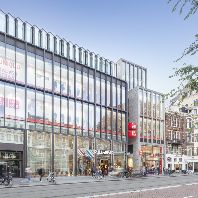Nearly half (45%) of established central London occupiers moved some, or all, of their operations to another submarket during 2015 with the trend showing no sign of abating in 2016, according to analysis from Cushman & Wakefield.
Cushman & Wakefield’s Movers & Shakers report examines the key migration trends of firms in the capital and reveals some distinct patterns among occupiers seeking the best value from their real estate footprint.
The shift from West to East remains an established trend with half of West End movers relocating to one of the City & East London submarkets, compared to just 16% moving in the opposite direction. However, this latter figure represents an increase from 6% in 2014 and reflects an increased desire by banking and financial occupiers to seek out high-profile buildings in proximity to their client base.
At a submarket level, the City Core welcomed the highest number of incoming occupiers relocating from other areas, followed by Canary Wharf & Docklands. The former attracted occupiers from all across central London, predominantly Midtown as well as Mayfair & St James’s. New arrivals in Canary Wharf & Docklands however mainly originated from the City, particularly the City Core and Southbank, with only two occupiers migrating from the West End namely Balfour Beatty and Giant.
The City Core also accounted for the highest number of occupiers migrating to other areas of central London, followed by Soho and Covent Garden, triggered mainly by low vacancy rates and increasing prime rents. This was against the trends seen in 2013 and 2014, when West End core areas accounted for the highest out-flow.
However, occupiers of the core submarkets, such as Mayfair & St James’s and the City Core, showed a high level of loyalty, reflected in the number of occupiers that stayed within their existing village when relocating.
Further afield across London’s emergent office markets, Aldgate and Whitechapel have increasingly seen positive net migration over the past three years. The regeneration of space and new schemes in the pipeline have resulted in the area coming onto the occupier radar.
Richard Howard, senior director, Central London leasing for Cushman & Wakefield, said: “London has constantly reinvented itself and locations that were either considered undeveloped, undesirable or too geographically remote, have become highly successful and have been absorbed into the wider city. Perhaps the most tangible example of this is King’s Cross. Such has been its success that it is difficult to remember that it was until very recently one of London’s least desirable areas. An unattractive ‘no-go’ location has been transformed into one of the most aspirational places, whether to work, live, or have fun. It is truly amazing to think that not long ago, the borders of the office market in Central London were Bishopsgate, Euston/Marylebone Roads, the Thames and Knightsbridge. These borders have all been broken and unquestionably, this process will carry on.”
Azar Laghaei, London markets analyst and report author, said: “Central London relocation patterns showed interesting trends during 2015. An increasing number of occupiers leased overflow space in their existing office building or close by, rather than instigate a full-scale relocation. This was a more cost-effective response to growth, providing a solution to existing lease commitments and flexibility in the company’s real estate holdings. With the current market dynamics of low supply levels and robust demand, there is also evidence of more occupiers leasing extra amount of space to secure a building.
“Growth in floorspace occupied was seen across almost all sectors, with media & tech and banking & financial services occupiers leading the trend. The rate of growth in the professional services sector was also noticeable in 2015, at 47% up from 4% in the preceding year and a negative rate in 2013.”















